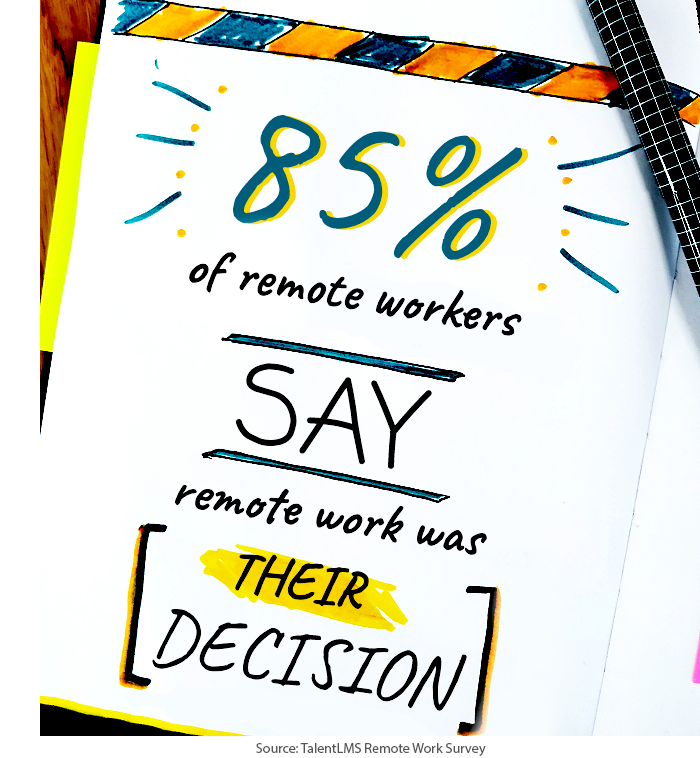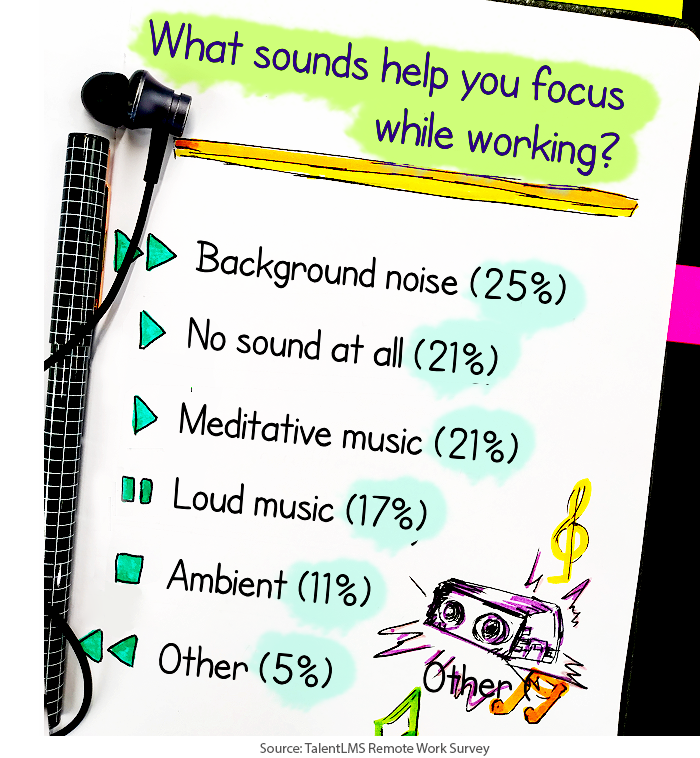The latest on all kinds of information, news, and resources that help you make working remotely better.
How to Ask to Work Remotely Full Time | Robin Madell, Money.usnews.com
Asking your company to work remotely – particularly full time – can be nerve-wrecking. Not only is it challenging to understand exactly how to tell your boss you want to work remotely, but there’s also the worry that your request to work from home full time might be turned down.
Craft Your Personal
You’ll need to work steps into your proposal that will convince your boss that you’re work-from-home worthy, reveal evidence of why working from home works for you, and show you care about team connections, communications and contacts.
Prove You Can Get the Job Done
To prove that you are work-from-home worthy, gather tangible, data-driven evidence that shows your results and your value. If you’ve made yourself indispensable to your team and company where you work now and can show proof of that in your proposal, this will help justify that you are ready and responsible enough to be entrusted with full-time remote work.
Compile Evidence of How and Why Remote Work Works
Despite how common and popular remote work has become, some bosses and employers still prefer to have everyone in the office, so proving how and why virtual work helps teams and companies thrive can help break through that mindset and gain strength for your work-from-home proposal.
Care About Team Connections and Contact
If your boss has concerns about you working from home full time, it likely traces back to a worry that you’ll be harder to communicate with when you’re working off-site. Your proposal should thus address exactly how you plan to stay in close touch with your colleagues, foster team connections and maintain regular contact for collaboration when needed.
Carefully Consider the Answer You Hear
Even with a solid remote work proposal, it’s possible that your manager won’t want you to work from home – at least not full time. If your boss offers a hybrid model that allows you to work remotely some of the time, consider whether this setup will get you close enough to your goals.
Many more companies offer the opportunity for remote work today, so it’s more possible than ever to find a full-time, work-from-home job. If your remote work proposal is rejected or modified, think about whether you want to accept the compromise – or whether a full-time, work-from-home arrangement is important enough for you to seek another position.
Are Your Employees Happy with the Support You Provide? | Saurabh Kumar, Entrepreneur.com
Employees are the building blocks of an organization, and their contributions to a company’s growth are invaluable. Just like you cater to your customers by providing them with personalized customer support, it is equally important to understand the needs of your employees and resolve their issues. Ensure you are always there for your employees whenever they need you and provide them with a friendly workplace. Employee engagement and productivity are directly connected to the support you provide to them.
Does conducting employee satisfaction surveys matter?
Here are some of the reasons why an organization needs to conduct regular employee satisfaction surveys:
1.Making unsatisfied workers productive
Employee satisfaction surveys help you identify the employees who are not satisfied working in your organization. Once they are identified, managers can understand their issues, resolve them, and increase their productivity while ensuring they are more engaged.
2. Preventing a toxic environment
Taking regular surveys and working on the findings prevents a toxic environment. Disgruntled employees lead to increased turnover and reduced productivity.
3. Increasing employee retention
Without conducting employee satisfaction surveys, you will not understand how your employees genuinely feel about working in your organization.
4. Improved customer relations
When employees are engaged and motivated, they build healthy and lasting relationships with your customers.
Essential questions to include in employee satisfaction surveys
Here are some of the most important questions that you should include in your employee satisfaction surveys to reach conclusive findings:
1.Do you feel connected to your peers
Workers spend a large part of their day interacting with each other. If they do not feel connected to their peers, it will affect their overall work experience.
2. Do you like the company’s culture?
Your employees must be in tune with your company’s culture. If they have issues with your culture, talk about it with them and work to find a solution.
3. Do you think the organization is open to change?
In the age of digitization, organizations need to be dynamic and implement flexible approaches to work. If your employees feel the company follows stringent rules that curb their free will, it affects their performance.
4. How seriously do the managers take your feedback?
This question helps you ascertain how well the management responds to the feedback provided by your employees and how valued your employees feel.
5. Do you feel that your efforts are recognized enough?
Management should acknowledge and show appreciation for efforts put in by employees. If employees feel managers do not value their contributions, productivity and engagement will take a hit.
6. Do your managers keep you updated about company news on a timely basis?
When your employees are regularly updated about important company news, they feel valued. Conversely, if they feel kept in the dark because of inadequate communication, they may feel like they don’t matter.
Effective ways to keep your employees happy
Here are some of the most critical ways in which you can keep your employees happy with seamless support provided to them:
1. Implementing Conversational AI
Modern help desks use conversational AI to facilitate seamless interactions between your employees and AI chatbots. Implementing this technology makes it easier for your employees to obtain personalized primary support without relying on support agents every time.
2. Automating the ticketing system
Traditional service desks often make the ticketing process tedious and complicated. By implementing a modern employee service desk, you can automate the entire ticketing system. These platforms allow your employees to create support tickets simply by initiating a chat with virtual assistants.
3. Integrating your employee help desk with a collaborative platform
You can leverage the support provided to your employees by integrating your help desk with your collaborative platform. Doing so would provide your employees and HR managers with a centralized platform to interact with each other.
4. Easy communication of employee benefits
Instead of reaching out to the HR managers to obtain every tiny detail about employee benefits, try automating communication of these benefits. Modern HR help desks allow your employees to get all relevant information about their benefits by chatting with virtual assistants.
The final word
Addressing the issues faced by your employees would help you leverage engagement and productivity. First, however, remember that it all starts by asking your employees if they are happy with their support. You’ll be surprised by what they are willing to share!
Companies that embrace the new world of work are reaping the benefits. For instance, they’re able to attract a significantly larger talent pool. A recent report found that employers that fail to offer remote work will be passed over by 58% of candidates.
“Why are some organizations wildly successful? It’s not by doing the same things they’ve been doing for the last few decades,” says Amy Lescke-Kahle, vice president of performance acceleration at The Marcus Buckingham Company, an ADP Company. “It’s because they’ve acknowledged and adjusted to the changes to work, the world and the market.”
Shed These 3 Little Beliefs To Finally Embrace Remote Work
To move forward, these leaders need to reexamine their beliefs around work and how they measure employees. Some of the most pervasive myths or limiting beliefs that need busting include:
Myth 1: Employees Need Babysitting
The best thing you can do in a remote setting is to simply trust your people. Yet many leaders are going in the opposite direction, using tracking software to keep an eye on employee activities. The 2021 ADP Research Institute People at Work report found that 62% of workers say they’re being more closely monitored than ever before.
Myth 2: In-Person Collaboration Is Always the Most Effective
Studies have shown that the traditional approach to collaboration—with people gathered in the same room—isn’t always the most effective method for generating good ideas. A few people end up dominating the conversation, leaving introverts and junior team members behind. In fact, a concept called Bartleby’s Law says that meetings waste 80% of the time for 80% of attendees.
Asynchronous communication and collaboration, necessary elements of remote work success, help solve this problem. When collaboration doesn’t always happen in person (or over videoconference), you remove the on-the-fly pressure and end up getting more input from more people.
Myth 3: Remote Work Just Adds Another Layer of Organizational Complexity
Reimagining work offers an opportunity to rethink all our systems—many of which are more complex than necessary, wasting time and causing major employee heartburn, Leschke-Kahle points out. Instead of making things more complicated, leaders should use the shift to remote work to streamline and simplify.
“We’ve so over-engineered the world of work with policies and processes that are not necessary in a grown-up version of work,” Leschke-Kahle says. “Simplification must be a big piece of what we do next.”
Welcome To The Great Work Experiment
Change can be scary, but as Leschke-Kahle points out, work is an easy, relatively low-risk place to test new practices. “This is really the great work experiment, and we should be digging into what works and what doesn’t. If you’re slow and hesitant to change, both your employees and your business are going to end up suffering, because the market will pass you by.”
6 Time Management Techniques To Utilize In The Forthcoming Year | Steve Johnson, Newsakmi.com
We all know how chaotic things can get at work: constant changes, slipping deadlines, and a to-do list that seems never-ending. Especially now that the year is coming to an end, many people claim that their New Year (business) resolution is “managing time better” or “becoming more efficient.” But is that possible, or will better time management become another New Year resolution that never came to be? Fortunately, you can enter the year more relaxed, as this article includes 6 effective time management techniques that will help you always be on schedule from now on.
1.Make Your To-Do List
This is the most important step, and yet many people skip it. There’s no reason to go into the office and take each day as it comes. Instead, start by gathering the notes that are stuck on your computer, the scribbles in your notebook, and your mental notes, and make a checklist of all your tasks. Having everything in one place helps you create a daily to-do list that gets you easily through the day.
2. Prioritize Your Tasks
Try to delegate or eliminate unimportant and non-urgent tasks, and bring important and urgent ones to the top of your list. Important tasks that don’t require your immediate attention should become part of a long-term plan.
3. Invest In Time Tracking
If lack of time management techniques is a company-wide problem, you should consider utilizing time tracking software. That would allow you to see when your employees clock in and out and how much time they’re spending on specific tasks. It could be that inconsistencies in attendance or excessive time being spent on unimportant tasks are to blame for your missed deadlines.
4. Resist The Urge to Multitask
Trying to take on multiple tasks at once, or constantly switching from one task to another can be time-consuming and detrimental to your productivity. Instead, you should focus on the task at hand and try to block any distractions. Taking on tasks one-by-one can also help you get through seemingly endless to-do lists without getting overwhelmed and stressed out.
5. Set SMART Goals
As you set your goals for this year’s resolutions, you might want to keep this acronym in mind. SMART stands for specific, measurable, achievable, relevant, and time-oriented. These are the characteristics all your goals should have if you’re hoping to achieve them within the accepted time limits.
6. Learn To Say No
The final and very important time management technique we’re sharing with you is learning to say no. It might seem hard for you, but you should know that you can’t successfully manage your time at work if you don’t say no once in a while. When someone comes to you with a request, pause for a beat. If you have some free time, by all means, help them. However, in case you’re truly swamped and have to neglect your own tasks to accommodate them, don’t hesitate to politely decline.
Conclusion
If your New Year resolution is to become more productive, efficient, and better at managing your time, you should consider the time management techniques we shared in this article. Follow them and organize your time to become less stressed and more successful.































